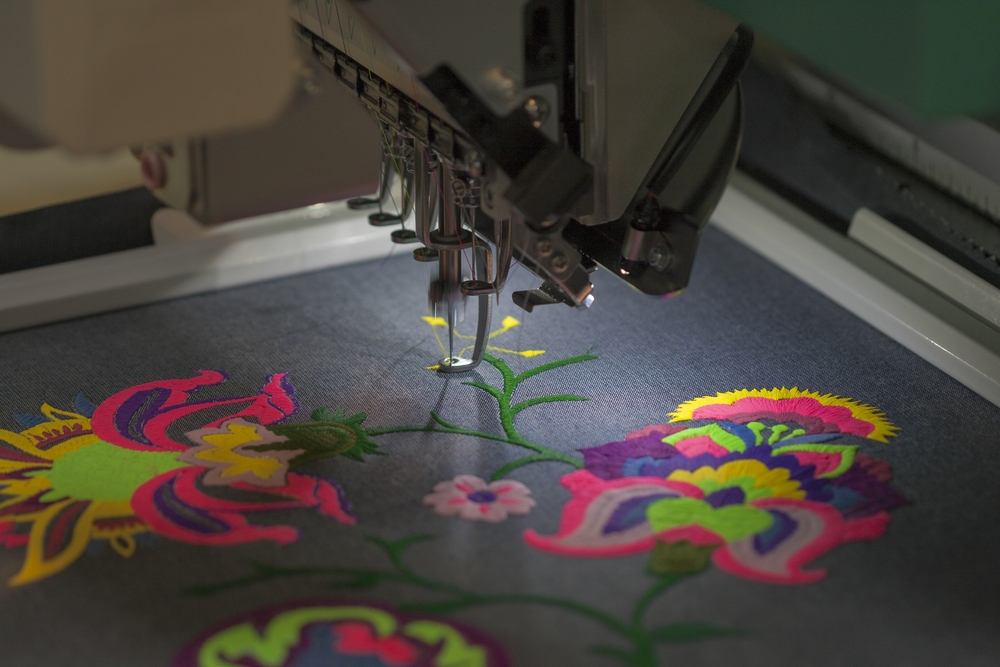Premier Digitizing for Embroidery: Perfect Stitch Every Single Time
Premier Digitizing for Embroidery: Perfect Stitch Every Single Time
Blog Article
Mastering the Embroidery Digitizing Refine: Your Ultimate Overview
Embroidery digitizing is a precise craft that requires accuracy and knowledge to convert detailed layouts into digital styles for equipment embroidery. As artisans get started on this journey to master the needlework digitizing procedure, a comprehensive understanding of the essentials establishes the foundation for excellence. Beyond the basic knowledge lies a world of innovative software, specialized devices, and nuanced methods waiting to be explored. By diving right into the nuances of digitizing, one can unlock a globe of innovative opportunities and boost their needlework tasks to brand-new elevations.

Comprehending Needlework Digitizing Essentials
Needlework digitizing basics develop the structure upon which complex layouts are translated into machine-readable layouts for precise sewing. This first step in the embroidery digitizing procedure is important for ensuring that the final stitched product is a loyal representation of the original style. Understanding needlework digitizing basics entails grasping crucial principles such as stitch kinds, stitch instructions, density, padding, and draw compensation.
Sew kinds play an essential role in identifying the visual and textural result of the embroidered design. By selecting the suitable stitch type, whether it be satin, fill, or running stitch, digitizers can accomplish the preferred impact and boost the total quality of the embroidery. Additionally, stitch direction influences the flow and measurement of the layout, while density figures out the spacing and protection of the stitches.
Moreover, rug stitching provides security to the style by protecting the material and avoiding distortion during the embroidery process. Pull compensation is another important consideration to counteract the all-natural tendency of textile to agreement when sewn. Understanding these needlework digitizing essentials is essential for producing professional-quality embroidered products.
Choosing the Right Digitizing Software
Picking the suitable digitizing software is a critical choice that substantially affects the performance and high quality of the embroidery digitizing procedure. Digitizing for Embroidery. When selecting the appropriate digitizing software application, it is crucial to take into consideration elements such as the intricacy of styles you plan to develop, the user-friendliness of the software application, the level of consumer assistance used, and the compatibility with your embroidery device
There are numerous digitizing software program options readily available on the market, varying from basic programs for newbies to advanced software program for specialist digitizers. Some popular selections consist of Wilcom EmbroideryStudio, Hatch Embroidery Software Program, and PulseID. These software packages provide a vast range of tools and attributes to assist you develop elaborate layouts effortlessly.
Before deciding, it is advisable to check out the various software program alternatives via totally free tests or trials to determine which one best suits your requirements. In addition, reading reviews and seeking suggestions from knowledgeable digitizers can provide important understandings right into the strengths and weaknesses of each software application plan (Digitizing for Embroidery). By carefully evaluating your requirements and contrasting the features of different digitizing software, you can make an informed option that improves your embroidery digitizing workflow
Digitizing Devices and Methods

Optimizing Design Settings for Embroidery
Grasping the details of layout settings is fundamental in achieving optimal lead to the embroidery digitizing process, building upon the foundation laid by understanding digitizing tools and techniques. When optimizing layout setups for needlework, it is crucial to take into consideration factors such as stitch type, density, rug, pull compensation, and registration. Stitch kind option influences the total feel and look of the design, with options like satin, fill, and running browse this site stitches offering different appearances and results. Density describes the spacing and density of stitches, affecting the design's coverage and resilience. Appropriate rug stitching offers stability and stops fabric distortion, particularly for intricate designs or on stretchy materials. Pull compensation adjusts for fabric stretch throughout sewing, making certain accurate style replication. Registration settings line up different elements of the style precisely, maintaining overall layout honesty. By fine-tuning these layout settings, embroiderers can improve the high quality and precision of their embroidered productions.

Troubleshooting Common Digitizing Issues
When coming across typical digitizing issues throughout the embroidery process, it is essential to recognize the source and execute reliable services promptly. One usual issue is stitch density problems, where stitches may be also thick, triggering the fabric to tighten, or as well sporadic, resulting in spaces in the style. Adjusting the stitch density settings in the digitizing software program can assist fix this concern.
Another constant challenge is string breaks during the needlework procedure. This can occur because of numerous reasons such as inaccurate tension setups, plain needles, or utilizing low-grade string. Ensuring proper maintenance of the embroidery maker, consisting of normal needle adjustments and stress adjustments, can reduce the incident of string breaks.
In addition, design registration errors can lead to misaligned aspects within the needlework layout. Examining the design look at these guys alignment in the digitizing software program and making essential changes before stitching can assist in avoiding this problem. By resolving these common digitizing issues quickly and successfully, you can ensure a smoother embroidery why not look here process and top quality completed items.
Final Thought
Finally, mastering the embroidery digitizing process needs a solid understanding of the fundamentals, the ideal selection of software program, and expertise of devices and strategies. Maximizing layout setups and troubleshooting usual digitizing concerns are essential steps in making sure high-grade needlework outcomes. By complying with these steps carefully, one can accomplish precision and efficiency in the digitizing process.
Report this page